Besides the documents already published and preserved by local cultural and conservation agencies, there are still quite a number of documents written in Chinese characters preserved in families, clans, and on the ground in the districts of Nui Thanh, Phu Ninh, and Tam Ky City. These documents are associated with the names of some ancient villages and communes in the Ha Dong district of Tam Ky prefecture during the feudal era.
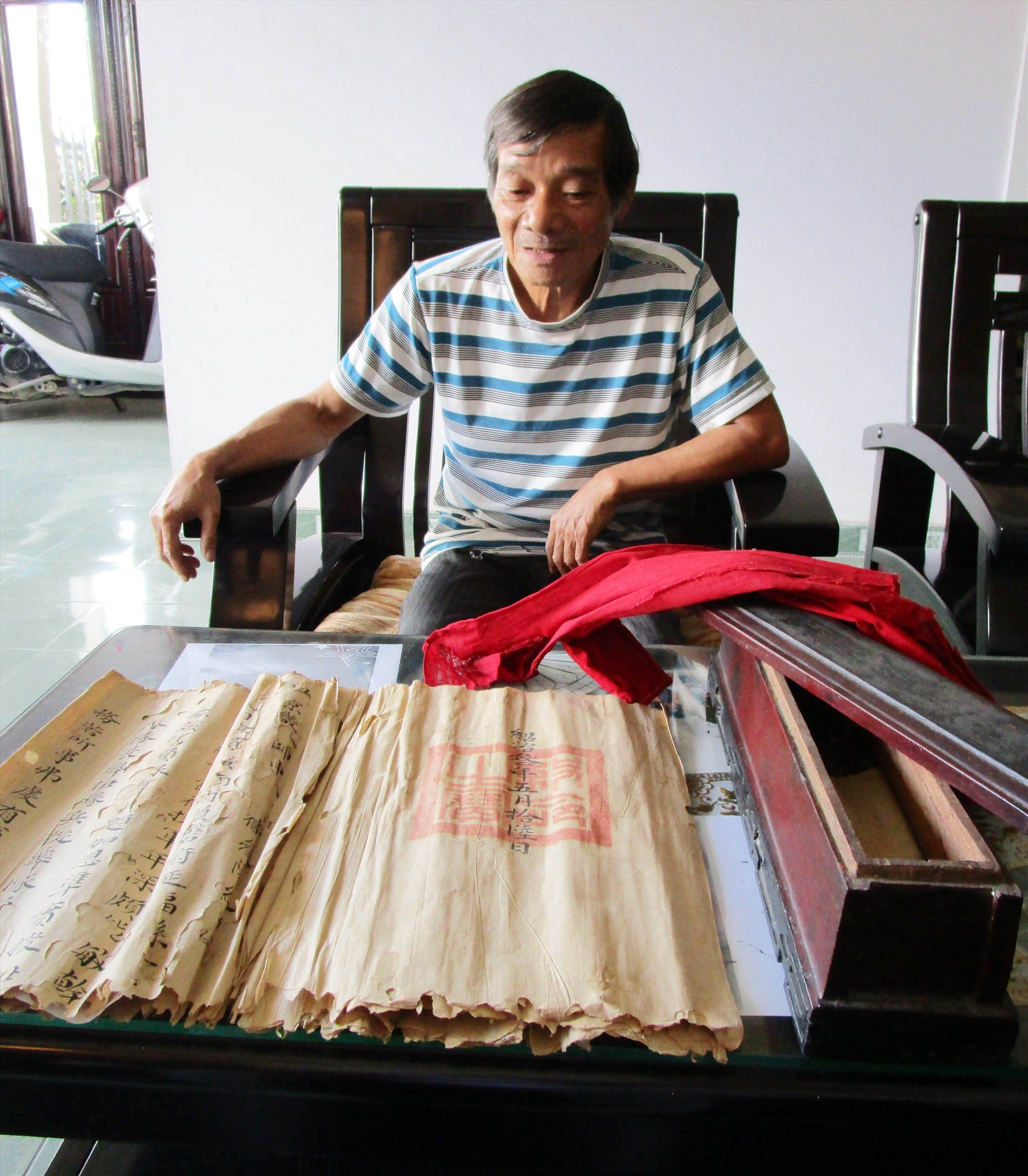
The documents referred to here include royal decrees, diplomas, administrative transaction documents, land deeds, land registers, and clan records; inscriptions on stone and wood in communal houses, temples, pagodas, clan churches, and most notably on ancient tombs...
In Nui Thanh
In the former villages/communes of Tịch An Đông, Phú Hưng, Khương Mỹ, Bích Ngô, and Thạch Kiều (now the two communes of Tam Xuân 1 and Tam Xuân 2), there are very noteworthy documents written in Chinese characters.
The archives in Tich An Dong village contain numerous documents related to the activities of the "Chu Tuong" (boat-building village) spanning from the reigns of Gia Long to Tu Duc. These documents also reveal the mobilization of local people to participate as "boat-building soldiers" in the "Chu Tuong" communities in the locality and the capital during the Nguyen dynasty. Furthermore, these documents show the process of formation from "Tich An Dong ward" to "Tich An Dong commune" (belonging to Chu Tuong), later renamed Tich Dong village/commune after the establishment of Tam Ky prefecture (1906).
In Phu Binh hamlet, Phu Hung village, there are still four stone steles inscribed with the same content: the royal decree conferring the title "Village's Founding Ancestor" on the tombs of four founding ancestors: Nguyen, Tran, Le, and Do. The Tran clan's ancestral temple (Phu Binh hamlet, Tam Xuan 1 commune) is preserving the original royal decree from the Duy Tan dynasty granted to the founding ancestor of the Tran family. This is the only original royal decree conferring the title of village's founding ancestor found in the area south of the Tam Ky River.
The collection in Khuong My village contains more than 20 documents, including certificates, royal decrees, and records about the career of a villager (Mr. Tran Hung Nhuong) during the reigns of Emperors Minh Menh, Thieu Tri, and Tu Duc. Notably, this collection includes two poems written by Prince Hong Nham (later Emperor Tu Duc) as gifts to Mr. Nhuong, who was once his teacher.
In Phu Ninh
In the former Khánh Thọ village (now part of Tam Thái commune and Tam Dân commune), besides the stele recounting the history of the founding of Bảo Thuận pagoda in Khánh Thọ village and the stele inscribed with the lament for his mother by Imperial Censor Phan Văn Xưởng (featured in Quảng Nam Weekend on May 13-14, 2023), there is also a large stone stele on top of the tomb of Mrs. Phạm Thị Lục, born in the year Ất Hợi - 1755 and died in the year Đinh Mão - 1807.
This stele is inscribed with a 17-line text containing approximately 384 Chinese characters, stating that she was the wife of the Deputy Governor of Hiep Hoa (An Hoa estuary) during the Nguyen dynasty. The inscription also provides some details about the situation of the people in the Ha Dong - Tam Ky region during the years 1788-1789 (during the Tay Son period).
In Gia Tho hamlet, formerly Tu Trang village (now Tam An 2 commune), on the wall of the ancient "General's Temple" there is a wooden plaque inscribed with a text recounting the story of changing the name of Cay Dua hamlet to Gia Tho and speaking about the customs, traditions, and achievements of the villagers, especially the family of Deputy Scholar Nguyen Duc.
In Chien Dan village (now Tam Dan commune), besides the inscriptions on stone steles and wooden plaques erected at the village's Confucian temple (later moved to the Tam Ky Confucian temple for preservation), there are also horizontal plaques and couplets placed in the inner courtyard of Chien Dan, and notably, a wooden plaque at the nearby "White Temple". Through this plaque of merit, one can learn a little about the population situation of Chien Dan village in the mid-19th century.
At the home of a descendant of Nguyen Duc (now in Quan Ruong, Tam Dan commune), there is a horizontal plaque hanging in front of the ancestral altar, inscribed with a four-line seven-syllable poem. According to the author's research, it is possible that this was composed by Nguyen Duc himself as he prepared to retire to his hometown after his time serving as an official in the imperial court.
In An Thien village, Tam An commune, there is a family that still possesses a very beautiful plaque inscribed with the words "Virtue worthy of praise".
In Tam Ky
Stone inscriptions in the inner city of Tam Ky (formerly Tam Ky commune, Tu Ban village and surrounding villages/communes) are quite common on ancient tombs such as the tomb of Mrs. Thuc Duc, the tomb of Mr. Ho Duc Bao, and the tomb of the scholar Nguyen Dai Lang (these three tombs have been relocated due to residential area planning). Currently, two very beautiful four-line inscriptions have been found on the tomb of Mr. and Mrs. Huynh Hoan Nhan in Binh An Bach Cau village (later renamed Duong An village, now part of An Son ward).
The village of Phú Quý Thượng (now Quý Thượng hamlet, Tam Phú commune) still preserves an inscription on a stone stele erected during the reign of Emperor Tự Đức (now erected in the newly built village temple on the site of the old monument). The inscription not only details the daily life of the villagers but also reveals two specific details: the village had a naval officer who once held the position of Commander of the Đà Nẵng Sea Fleet and a scholar with a bachelor's degree who worked in the Imperial Academy of Huế. Both men lived and worked in the mid-19th century, during the reign of Emperor Tự Đức.
The Chinese-language texts preserved in village communal houses, ancestral temples, and private residences within Tam Ky city are quite abundant. Besides the horizontal plaques inscribed with the content of the Nguyen Dynasty's imperial decrees of commendation, such as "Upper-class deity" (for the tutelary deity of Phuong Hoa village) and "Longevity people" (in Tra Cai hamlet and Doan Trai village), there are also imperial decrees granted by the Nguyen Dynasty to famous figures such as Mr. Doan Van Xuan – the first scholar from Ha Dong (Quang Phu village), and Mr. Nguyen Van Xan – who once held the position of Mountain Defense Commissioner of Quang Nam (Quang Phu village).
In a private residence in Hoa Huong ward, many administrative documents of Tam Ky commune and Tu Ban village (the Van market area - Tam Ky in the past) are still preserved, providing valuable insight into the commercial, cultural, and administrative life of the residents in the central area of the former Tam Ky prefecture.
And documents about naval officers.
In Nui Thanh, besides the famous documents about Mr. Tran Van Thai - a high-ranking naval officer of the Tay Son and Gia Long dynasties, there are also documents about two naval officers of the Nguyen dynasty: Mr. Vo Viet Kiem (whose descendants are worshipped in Tam Anh Nam commune) and Mr. Le Van Ung (whose descendants are worshipped in Tam Xuan 2 commune).
In the eastern part of Tam Ky, descendants are preserving documents about naval officers Vo Van Tay (from Phu Quy Ha village), three officers of the Truong family (all from Ngoc My village), and officer Tran Sai (from Phu Quy Thuong village).
Most notably, documents mention naval officer Le Van Uoc (from Hoa Thanh Ha village) who, after retiring, was still assigned by the imperial court to command the militia of four localities from Vinh Giang ward (Thang Binh) to Hoa Thanh commune (Tam Ky) with the task of guarding the coastal area from after 1860 - after the French colonialists attempted to occupy Da Nang.
Source




![[Photo] Prime Minister Pham Minh Chinh presides over a meeting on private sector economic development.](/_next/image?url=https%3A%2F%2Fvphoto.vietnam.vn%2Fthumb%2F1200x675%2Fvietnam%2Fresource%2FIMAGE%2F2025%2F12%2F20%2F1766237501876_thiet-ke-chua-co-ten-40-png.webp&w=3840&q=75)





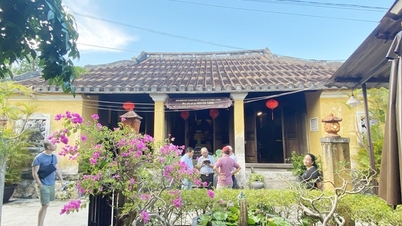
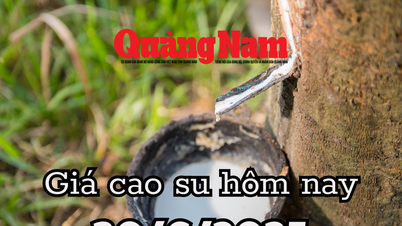









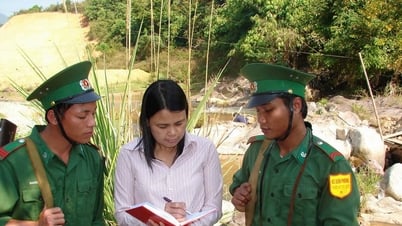
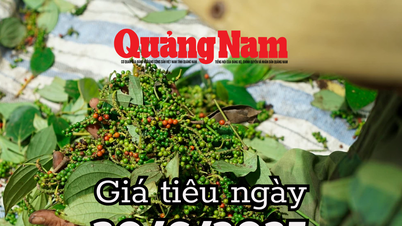






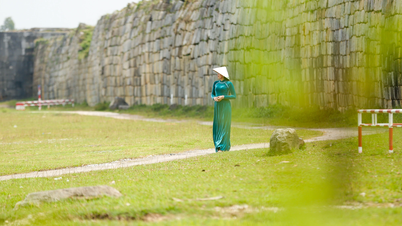

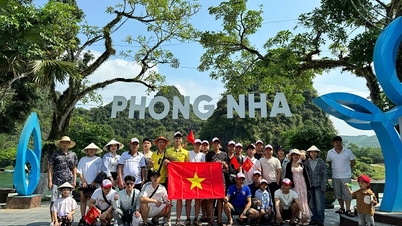

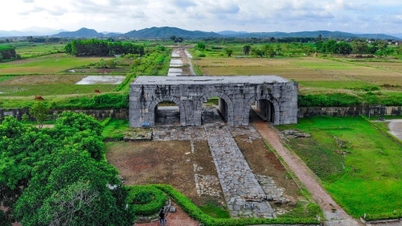

































































Comment (0)